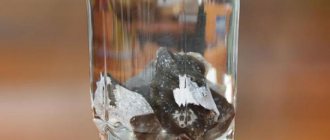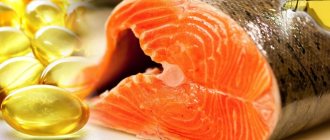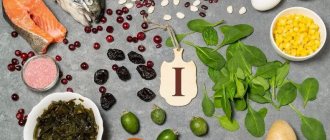Sex hormones control our entire lives, so hormonal balance is extremely important for the normal functioning of the body and overall well-being.
Without estrogens, a woman would not have a chance at motherhood, attractive appearance and sexual attractiveness. A normal amount of these hormones allows you to have strong bones, the necessary level of good cholesterol and an effectively functioning metabolism, preventing many dangerous diseases.
But in excess amounts, estrogens increase the risk of some dangerous diseases, including breast and ovarian cancer. Therefore, it is so important to study the level of sex hormones at different stages of life.
The role of estrogens
The content of the article
One of the most important sex hormones for women is estrogens, which are produced mainly in the ovaries, as well as in the placenta and adipose tissue. This is a group of hormones that include:
- estradiol;
- estrone;
- estriol.
The influence of estrogen on our body is very wide:
- affect the reproductive system;
- responsible for the development of mammary glands;
- regulate the menstrual cycle;
- promote the development of uterine muscles;
- increase vaginal hydration.
Estrogens also affect the urinary system, speed up metabolism, protect blood vessels, increase the concentration of “good” cholesterol, and stimulate bone mineralization.
However, estrogens can also influence the development of many serious diseases, including many types of cancer, including:
- breast cancer;
- endometrial cancer;
- ovarian cancer;
- lung cancer.
This is why it is so important to control the levels of these hormones. Excess estrogen, as well as deficiency, can have very serious health consequences.
What it is?
Phytoestrogens are substances of plant origin that resemble estrogens in their chemical structure. The largest amounts are found in soybeans, red clover, flax seeds, alfalfa, red grapes, and hops. They were discovered by scientists at the beginning of the last century, and gained popularity at the end of it.
Scientists have noticed that women living in Southeast Asia endure menopause much easier than European and American women and are less likely to suffer from osteoporosis, breast cancer and cardiovascular diseases. And in the diet of Asian women, soy, which is extremely rich in estrogen-like substances, occupies a significant place. True, at the moment the conclusions from these studies are called into question, because the difference in the incidence rate of women from different countries can be caused by many other reasons.
Soy, which is extremely rich in estrogen-like substances, occupies a significant place in the diet of Asian women, but at the moment the conclusions from these studies are called into question.
Symptoms of excess estrogen
Excess estrogen manifests itself in women as menstrual irregularities. It may appear as a result of diseases (for example, ovarian cancer) or poor nutrition, stress, heavy physical activity, as a hereditary factor. Excess estrogen leads to embolism and thrombosis, edema and the appearance of stones in the bile ducts. Thus, the symptoms that accompany increased levels of these hormones cannot be ignored.
You should definitely check your estrogen levels if you notice most of the following symptoms:
- swollen and tender breasts;
- bloating;
- weakened libido;
- irregular menstruation;
- headaches and migraines;
- mood swings;
- weight gain;
- hair loss;
- hands and feet are cold;
- chronic fatigue;
- problems with concentration and memory;
- sleep problems;
- frequent cramps, especially in the lower extremities;
- nausea and vomiting.
Estrogen levels can be reduced with medications and changes in your daily diet. It should exclude foods rich in natural estrogens, called phytoestrogens, that is, first of all, soy products, as well as meat from animals raised using synthetic hormones. Food packaging (plastic containers), as well as antibacterial soaps and dishwashing liquids, may contain triclosan, a substance similar in chemical formula to estrogen, which can disrupt the body's hormonal balance.
Increased hormone levels
Among women
Some of the most important hormones in a woman’s body are estrogen and progesterone. Both are produced in the ovaries. These hormones are released at different phases of the menstrual cycle.
On the first day of menstruation, the pituitary gland releases follicle-stimulating hormone (FSH). Under its influence, the follicle begins to develop on the ovary and estrogens are released. As soon as their level rises to a certain point, they block the release of FSH. This occurs approximately on the 12th–15th day of the cycle.
At this time, the pituitary gland begins to secrete another hormone - luteinizing hormone (LH). When its level rises, ovulation occurs - the follicle bursts and an egg ready for fertilization emerges. After ovulation, estrogen levels decrease and progesterone begins to be produced in the ovaries.
Schematically, the production of hormones during the menstrual cycle can be represented as follows:
follicle-stimulating hormone (pituitary gland) → estrogens (ovaries) → luteinizing hormone (pituitary gland) → progesterone (ovaries)
Oral contraceptives operate on this principle: they regulate the amount of female hormones in the body. At the same time, they reduce the level of FSH to such an amount that luteinizing hormone does not begin to be produced. No luteinizing hormone - no ovulation.
In men
Normally, in men, the amount of estradiol should fluctuate between 50–130 pmol/l. Increased hormone levels in men may indicate a tumor in the testicles.
Symptoms of estrogen deficiency
Many factors contribute to low estrogen levels. Estrogen deficiency at a young age can cause underdevelopment of the ovaries, Swyer syndrome, Turner syndrome, and in older women it can be the result of premature ovarian failure or the onset of menopause. Estrogen deficiency can occur from anorexia, extreme physical activity, insufficient pituitary gland function, and alcohol abuse. Estrogen deficiency is manifested by symptoms of a mental and physical nature:
- irritability and decreased mood;
- problems with concentration;
- sleep disturbance;
- constant fatigue;
- rapid heartbeat;
- "tides";
- sweating;
- increase in body weight;
- dry eyes, skin, vagina;
- headaches;
- decreased libido.
Are cosmetics with phytoestrogens beneficial?
Many cosmetic brands produce products with phytoestrogens to care for aging skin. But can they really slow down the decline process? “If we are talking about a rejuvenating effect, then, alas, phytoestrogens are ineffective here,” says our expert. — Unlike steroid hormones, they are not absorbed through the skin and do not have a systemic effect. And since the substances contained in plant extracts themselves are inactive and the bulk of compounds with estrogen-like activity are formed in the intestines, you should not expect any pronounced effect from phytoestrogens applied to the skin. But in cosmetics for problem skin and products against baldness, they are useful as antioxidants and as inhibitors of the enzyme that stimulates sebum production.”
Find out also about the possibilities of hormone therapy during menopause.
Estrogen studies
The appearance of symptoms characteristic of a lack or excess of estrogen should be a signal that it is necessary to examine the level of these hormones in the blood. This study is carried out on an empty stomach, that is, approximately 8 hours after the last meal.
The norm of estrogen for women
| Hormone | Phase | Normal indicator |
| Estrone | during the childbearing period | 17-200 ng/l |
| during the postmenopausal period | 7-40 ng/l | |
| Estradiol | in the follicle maturation phase | 30-120 ng/l (110-440 pmol/l) |
| during ovulation | 130-370 ng/l (477-1358 pmol/l) | |
| during the luteal phase | 70-250 ng/l (257-917 pmol/l) | |
| during the postmenopausal period | <10 ng/l | |
| Estriol | below 80 ng/l |
Normal estrogen levels for men
| Hormone | Normal indicator |
| Estrone | 10-60 ng/l |
| Estradiol | 10-40 ng/l |
| Estriol | <160 ng/l |
When are phytoestrogens prescribed?
After 50 years, many women begin to complain of irritability, lethargy, fatigue, depressed mood, hot flashes, palpitations and other unpleasant symptoms of menopause. One of the modern trends in the treatment of menopausal disorders is hormone replacement therapy. However, taking hormonal drugs during menopause sometimes leads to serious side effects. Therefore, women often abandon these drugs and resort to the help of phytoestrogens.
“The doctor decides on the advisability of therapy together with the patient, based on her condition, after tests,” says our expert. - Of course, they mainly take into account the manifestations of estrogen deficiency, as well as subsequent complications, for example, osteoporosis. Modern medicine strives for disease prevention, which is very important for combating the complications of menopause. Therefore, I recommend starting treatment with phytoestrogens in the premenopausal period. Since during menopause there is a pronounced decrease in the concentration of hormones, plant substances do not suppress their work (they do not act as antiestrogens), that is, for women after 40 years of age, their use is relatively safe.”
Estrogens in food
If we have estrogen deficiency, then it is worth changing our daily diet. Where is the most estrogen? Particularly rich in phytohormones:
- vegetables (broccoli, Brussels sprouts, cabbage, cauliflower, legumes, onions, garlic);
- fruits and berries (citrus fruits, grapes, apples, pears, black currants);
- seeds;
- nuts;
- grains such as barley, rye and wheat;
- in many herbs, for example, clover, alfalfa, motherwort, valerian, sage.
If you find an error, please select a piece of text and press Ctrl+Enter
Groups of phytoestrogens
Today, the following groups of natural phytoestrogens are distinguished.
- Coumestans (coumaric derivatives) : specifically coumestrol, which belongs to the class of cyclic esters of carboxylic acids (lactones). Coumestrol is found in clover, alfalfa, soybeans, regular beans, and most cruciferous crops.
- Isoflavones: genistein, daidzein, equol (a metabolite of daidzein), biochanin A, formononetin (biochanin B), glycitein, prunetin, irigenin. Contained in the same soybeans, clover, alfalfa sprouts, sophora, tiger lily rhizome, etc.
- Lignans: metairesinol, secoisolariciresinol, hydroxymetairesinol, syringaresinol, sesamin are derivatives of phenylalanine and are part of the walls of plant cells. Secoisolariciresinol (in diglucoside form) is particularly found in flax, sesame, sunflower and pumpkin seeds. Entering the body, under the influence of colon bacteria, lignans are transformed into active metabolites - enterolignans - enterodiol and enterolactone.
6. Cereals
Cereals and cereal products contain significant amounts of phytoestrogens, in particular lignans. As expected, the leader in this indicator is bread with soy and flax additives (26).
Doctors also paid attention to bran, which actually turned out to be rich in lignans. However, in a number of studies, the use of bran in food led, on the contrary, to a decrease in estrogen levels. A more pronounced drop occurred with daily intake of 10 and 20 g of bran, and 5 g did not have a noticeable effect on the concentration of sex hormones (27). This effect is associated with the fact that fiber, which bran is also rich in, binds phytoestrogens and does not allow them to realize themselves.
Cruciferous vegetables and garlic
First of all, these are all types of cabbage known to us. They have been studied for a long time and carefully; phytoestrogens, in significant quantities, have been found in each representative of this family ().
Broccoli and cauliflower are rich in one of the representatives of lignans – secoisolariciresinol. And cabbage and Brussels sprouts contain coumestrols, which also have estrogenic activity (31).
We should also talk about garlic. An ambiguous plant due to its smell. However, its benefits to the body are beyond doubt.
Most studies on the effects of garlic on estrogen-deficient individuals have been conducted on animals. Thus, in female rats with removed ovaries, while feeding with garlic oil, an improvement in the condition of bone tissue was noted (18, 19, 20).
For postmenopausal women, the results of taking garlic have been mixed. The activity of inflammation, an inducer of osteoporosis, decreased, but the hormonal levels did not statistically change ().








